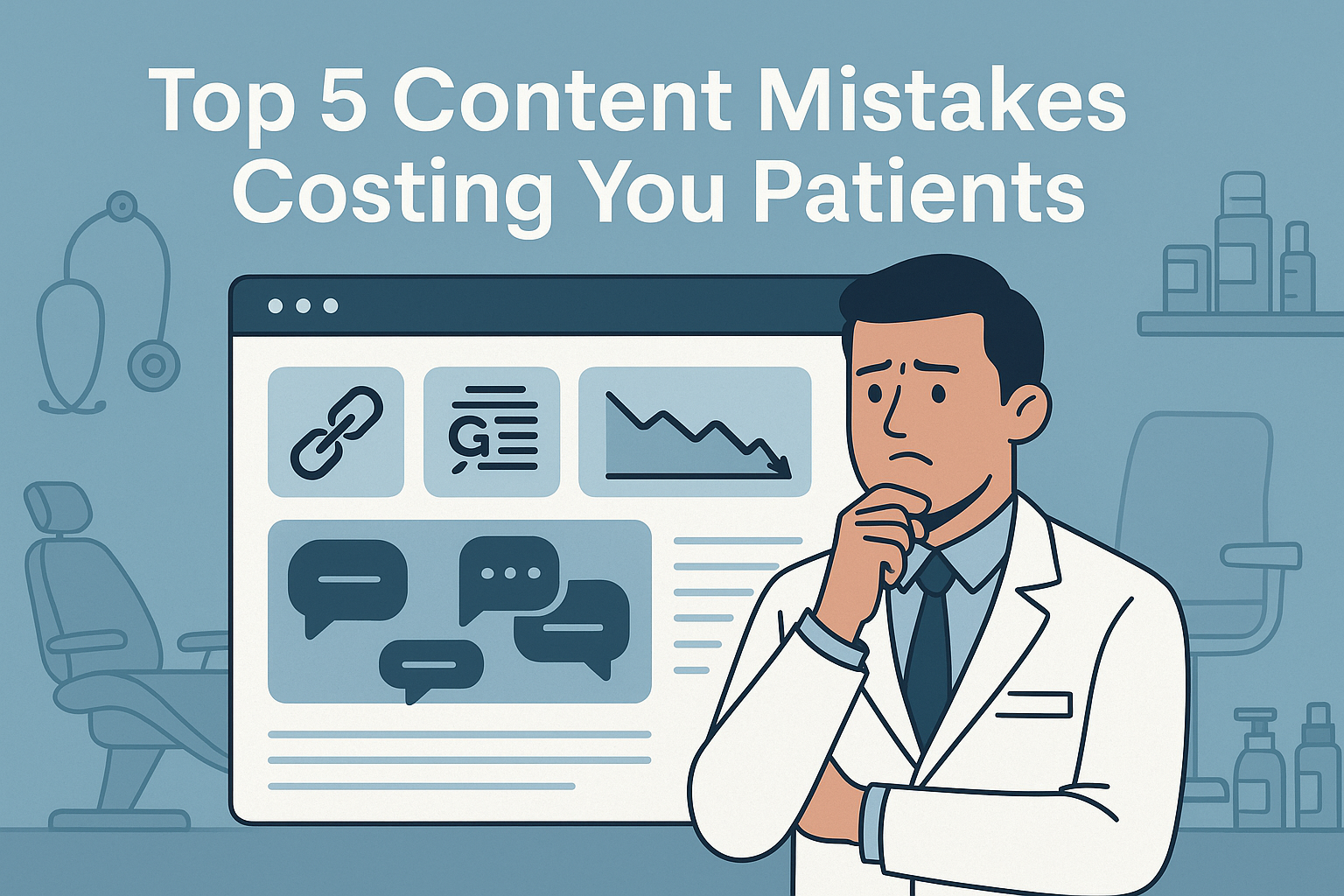Top 5 Patient-Focused Authority Content Mistakes (And How to Avoid Them)
Think your content is winning patients over? Think again. One small slip could send them straight into the arms of your competitors.
When it comes to creating content for healthcare, trust is everything. Imagine walking into a doctor’s office that looks clean and professional but leaves you feeling confused, unheard, or overwhelmed. That’s exactly how many patients feel when they read healthcare content that misses the mark.
Crafting patient-focused authority content is like being a good doctor online. It requires clarity, empathy, and a deep understanding of what your audience truly needs. In this article, we’ll unpack the five most common mistakes healthcare brands and professionals make when trying to establish authority—and more importantly, how to avoid them.
1. Talking Like a Doctor Instead of a Human
If your blog sounds like a medical textbook, your readers are already tuning out.
Too many healthcare professionals write with their peers in mind instead of their patients. The result? Complex jargon, long-winded explanations, and clinical tones that make the average reader feel like they’ve accidentally signed up for a med school lecture.
Patients are not looking for dense, technical content. They want answers that are easy to understand, delivered with warmth and clarity.
What to do instead: Use simple language and relatable comparisons. Speak directly to your reader, like you would during a real consultation. Aim for an 8th-grade reading level to make your content accessible.
Stat to know: A study by the National Institutes of Health found that most patient education materials are written above the 10th-grade level, even though the recommended readability is between 6th and 8th grade.
Quote: “The art of medicine consists of amusing the patient while nature cures the disease.” – Voltaire
2. Skipping the ‘Why Should I Care?’ Factor
Just because you think a topic is important doesn’t mean your patient does.
You may be passionate about the latest advancements in a treatment protocol or the details of a rare condition. But if your audience doesn’t understand how it affects their daily life, they’ll quickly lose interest. Content that dives into the what without explaining the why often feels irrelevant.
What to do instead: Always explain why the information matters to the patient. How does it impact their health, lifestyle, finances, or peace of mind? Help them connect the dots.
Stat to know: According to Healthline Media, content that highlights real-world patient outcomes sees twice the engagement of content that sticks to technical descriptions.
Quote: “People don’t buy what you do; they buy why you do it.” – Simon Sinek
3. Overloading the Reader with Information
Too much information is like handing someone a firehose when they just needed a glass of water.
It’s tempting to include every fact, stat, and scenario in a single piece of content. After all, you want to show you’re the expert. But piling on details without structure overwhelms readers and buries the key message.
Authority comes from clarity, not quantity.
What to do instead: Focus on the most important points and structure your content with clear subheadings, bullet points, and summaries. Give readers a logical path to follow.
Stat to know: Research from the Nielsen Norman Group shows that people only read about 20 to 28 percent of the words on a typical web page.
Quote: “If you can’t explain it simply, you don’t understand it well enough.” – Albert Einstein
4. Ignoring the Emotional Side of the Patient Experience
Facts tell. Feelings sell.
Many healthcare writers stay laser-focused on data, forgetting that patients are people with fears, hopes, and questions. Ignoring the emotional context of a health issue can make your content feel cold, no matter how informative it is.
People don’t just want to know what’s wrong. They want to feel like you understand what they’re going through.
What to do instead: Speak with empathy. Share patient stories, use gentle language, and acknowledge emotions like anxiety, confusion, or relief. Help readers feel seen and supported.
Stat to know: Emotionally engaging content sees 31 percent higher engagement rates than fact-only posts, according to the Content Marketing Institute.
Quote: “They may forget what you said, but they will never forget how you made them feel.” – Maya Angelou
5. Neglecting the Patient’s Digital Journey
Even the best content is useless if no one can find it—or figure out what to do next.
Many healthcare websites have content scattered across blogs, FAQs, and landing pages with no clear direction or next step. This leaves patients stuck in research mode, unsure of how to move forward.
Your content should guide them through each stage of their journey, from symptoms to solutions.
What to do instead: Map your content to the patient journey—awareness, consideration, and decision-making. Use SEO best practices to make it searchable, and add clear calls to action that guide them to book appointments, download resources, or ask for help.
Stat to know: According to Google Health, 77 percent of patients begin their healthcare journey with a search engine.
Quote: “Your most unhappy customers are your greatest source of learning.” – Bill Gates
🎉 Conclusion: Be the Guide Patients Are Searching For
Creating patient-focused authority content isn’t about sounding smarter than everyone else. It’s about being helpful, human, and easy to understand.
Here’s a quick recap:
- Ditch the jargon and speak like a human.
- Always explain why the topic matters to your reader.
- Focus on the essentials and keep your structure clear.
- Don’t forget the emotional side of the patient experience.
- Optimize for visibility and guide patients through their next steps.
When you avoid these five common mistakes, you’re not just building content—you’re building trust. And in healthcare, trust is the most powerful currency there is.
Final thought: Every piece of content is an opportunity to reassure, guide, and inspire someone who’s looking for answers. Make it count.


